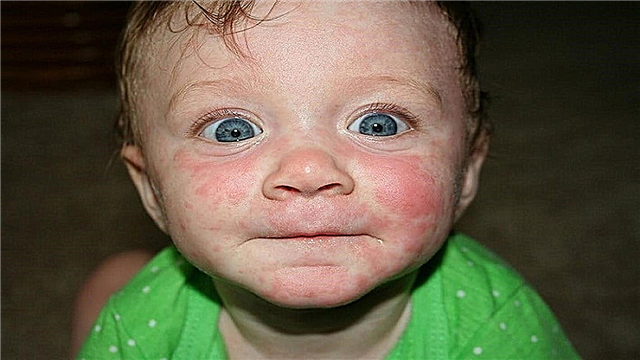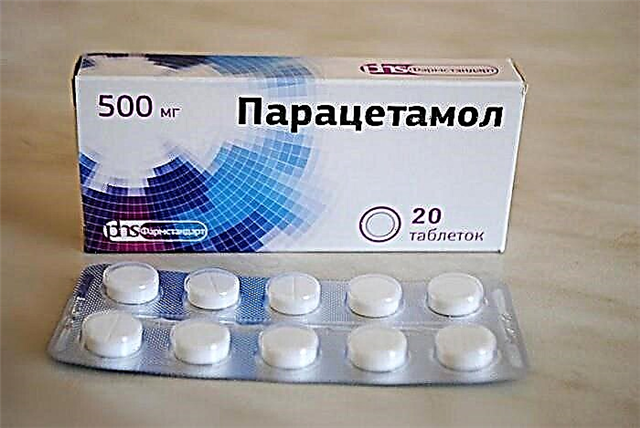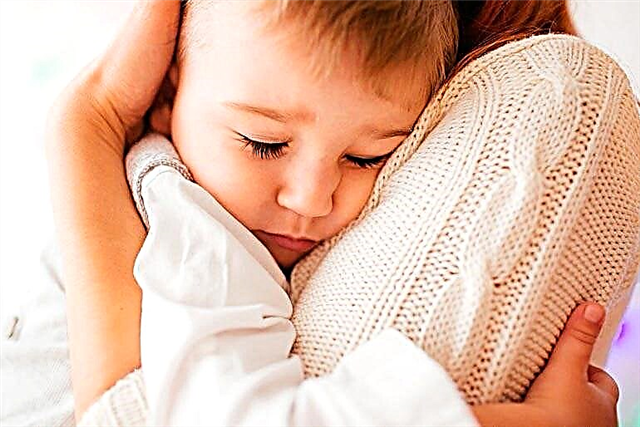
The diagnosis of MMD in a child baffles parents. The decoding sounds quite scary - "minimal brain dysfunction", the happiest word here is "minimal". What to do if a child has found a small brain dysfunction, how it is dangerous and how to cure the child, we will tell you in this article.
What it is?
In neurology, there are several duplicate names for what hides behind the abbreviation MMD - mild childhood encephalopathy, hyperactivity disorder and lack of attention, minor cerebral dysfunction, etc. Whatever the name, the essence behind it is about the same - behavior and psychoemotional reactions of the baby are disturbed due to some "failures" in the activity of the central nervous system.

Minimal cerebral dysfunction first appeared in medical reference books in 1966, but it was previously overlooked. Today, MMD is one of the most common anomalies of an early age, its signs may appear as early as 2-3 years, but more often by 4 years. According to statistics, up to 10% of primary school students suffer from minimal brain dysfunction. At preschool age, it can be found in about 25% of children, and a particularly "talented and corrosive" neurologist can find an ailment in 100% of active, mobile and disobedient children.

It is not so easy to understand what happens to a child with minimal dysfunction of the central nervous system. To put it simply, certain central neurons die or experience problems with cellular metabolism due to negative factors of an internal or external nature.
As a result, the child's brain works with some anomalies that are not critical for his life and health, but that affect behavior, reactions, social adaptation, and learning ability. Most often, MMD in children manifests itself in the form of a violation of the psychoemotional sphere, memory, attention, as well as in increased physical activity.

In boys, MMD occurs four times more often than in female children.
Causes
The main causes of minimal brain dysfunction are considered to be damage to areas of the cerebral cortex and anomalies in the development of the baby's central nervous system. If the first signs of MMD develop after the child is 3-4 years old and older, the reason may be insufficient participation of adults in the upbringing and development of the child.

The most common causes are intrauterine. This means that the baby's brain was negatively affected even while the baby was in the mother's womb. Most often, infectious diseases in the mother during pregnancy, and her taking medications that are not allowed for expectant mothers, lead to minimal dysfunction of the central nervous system in a child. The age of the pregnant woman over 36 years old, as well as the presence of chronic diseases in her, increase the risk of negative effects on the baby's nervous system.

Improper nutrition, excess weight gain, edema (gestosis), as well as the threat of miscarriage can also affect the neurons of the toddler, especially since neural connections are still being formed during pregnancy. From the same point of view, smoking and drinking alcohol during gestation are dangerous.
Disturbances in the nervous system can also occur during childbirth due to acute hypoxia, which a baby can experience in rapid or protracted childbirth, for a long anhydrous period, if the fetal bladder has opened (or was mechanically opened), and after that the weakness of the birth forces has developed ... It is believed that a cesarean section is stressful for a child, since it does not pass through the birth canal, and therefore this type of operation is also referred to as triggers of MMD. Quite often, minimal brain dysfunction develops in children with a large birth weight - from 4 kilograms or more.

After birth, a baby may be exposed to toxins and may also suffer a head injury, such as hitting the head while falling. This can also cause disturbances in the functioning of the central nervous system. Quite often, the cause of the disease is the flu and ARVI transferred at an early age, if neurocomplications have arisen - meningitis, meningoencephalitis.

Symptoms and signs
Signs of brain dysfunction can appear at any age. In this case, the symptoms will be quite typical for a particular age group.
Children under one year old usually have so-called minor neurological signs - sleep disturbances, frequent violent jerking, diffuse hypertonicity, clonic contractions, trembling of the chin, arms, legs, squint, and profuse regurgitation. If the baby cries, the symptoms get worse and more noticeable. In a calm state, their manifestation can be smoothed out.

Already at six months, a delay in mental development becomes noticeable - the child reacts little to familiar faces, does not smile, does not walk, does not show much interest in bright toys. From 8-9 months, a delay in subject-manipulative activity becomes noticeable - the child is bad at taking objects. He doesn't have the patience to reach out or crawl to them. They bore him quickly.
In children under one year old, MMD is accompanied by increased excitability and sensitivity of the digestive system. Hence, at first problems with regurgitation, and later - with alternating diarrhea and constipation, which can replace each other.

From one year on, children with minimal brain dysfunction show increased motor activity, they are very excitable, they continue to have problems with appetite - either the child constantly eats, or it is completely impossible to feed him. Children often gain weight more slowly than their peers. Most people are up to three years old. restless and disturbing sleep, enuresis, inhibited and slow development of speech.
From the age of three, babies with MMD become more awkward, but at the same time they are very quick-tempered and sometimes negatively disposed towards criticism and demands of adults. A child at this age can usually do one thing for quite a long time; children with minimal brain impairment are unable to do this. They constantly change their occupation, abandon unfinished business. Quite often, these guys are sensitive to loud sounds, stuffiness and heat. Very often, according to the observations of neurologists, it is babies and adolescents with MMD who are sick to vomit when traveling in transport.

But MMD begins to manifest itself most vividly when a child gets into the company of peers, and this usually happens at the age of 3-4 years. Hypersensitivity, hysteria is manifested, the baby makes a huge number of movements, it is difficult to calm him down and captivate him with something, for example, an occupation. At school, children with such a diagnosis have the hardest time - it is difficult for them to learn how to write, read, it is very difficult for them to sit in the lesson and observe the established discipline in the class.
Further more. Self-esteem goes down, communication skills are impaired. Often these children move away from the team or become informal leaders of not the best companies.

Diagnostics
At the age of up to one and a half years, an ultrasound scan of the brain is performed, the rest of the children can be prescribed CT, MRI, EEG. These methods make it possible to assess the structure of the cortex and subcortical layer of the brain. It is not always possible to establish the cause of the manifestations of minor cerebral dysfunction. A neurologist in relation to children under three years of age makes his decision based on the results of a reflex examination.
In senior preschool and school age, psychodiagnostics is carried out, the tests used - "Wechsler test", "Gordon test", "Luria-90".

Treatment
Therapy in all cases is combined - it includes taking medications, physiotherapy, gymnastics and massage, as well as educational and developmental classes with kids or psychological classes with schoolchildren. A special mission in the matter of therapy is assigned to the family, because the child spends most of the time in it. It is recommended to talk to the child calmly, to focus on the successes, and not on the shortcomings of his behavior.
Parents should get rid of the words “no”, “don’t dare”, “to whom they say”, “no” and establish more trusting and kind relations with the child.
A child with MMD should not watch TV or play on the computer for a long time. He definitely needs a daily routine in order to go to bed and get up on time. Outdoor walks and active outdoor sports are encouraged. Among quiet home games, it is better to opt for those that require concentration and patience from the kid - puzzles, mosaics, drawing.

Sedatives or hypnotics, nootropics, tranquilizers, and antidepressants may be recommended depending on the specific symptoms. Dr. Komarovsky, whose opinion is listened to by millions of mothers around the world, claims that there is no cure for MMD, and most drugs prescribed by neurologists are prescribed completely unjustifiably, because it is not a pill that heals a child, but the love and participation of adults.
Among the sports that are recommended for such hyperactive children, we can recommend those that require focusing on a second event, as well as improving coordination of movements. These types include skiing, biathlon, swimming, cycling, tennis.
Forecasts
Despite the terrifying name, minimal brain dysfunction is nowhere near as dire. Thus, about 50% of children with MMD successfully “outgrow” the disorder, and by adolescence they do not show any deviations. It is nevertheless necessary to treat MMD. If you do not take into account medicines, then massage, sports, adequate education and developmental activities with a child give very good results. Only in 2% of children, the pathology persists until adulthood and cannot be corrected. In the future, she creates many problems for a person in matters of contacts, work, interpersonal relations. It is difficult for a person with MMD to create a prosperous family, to maintain normal relations in it.
Mom reviews on the Internet show that with timely treatment started, the symptoms disappear within a year. However, parents emphasize that very often doctors do not know how to distinguish a child with MMD from a simply active and mobile child, and therefore treatment is prescribed for “safety net”.

For more information on minimal brain dysfunction in children, see the following video.



